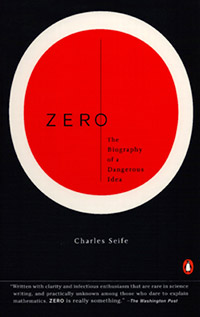New Lecture Just Added: Dr. Matt Ridley
The Rational Optimist:
How Prosperity Evolves
Sunday, June 20, 2010 at 2:00 pm
Baxter Lecture Hall
In this lecture, based on his new book, The Rational Optimist: How Prosperity Evolves) Matt Ridley demonstrates that life is getting better — and at an accelerating rate. Food availability, income, and life span are up; disease, child mortality, and violence are down — all across the globe. Though the world is far from perfect, necessities and luxuries alike are getting cheaper; population growth is slowing; Africa is following Asia out of poverty; the Internet, the mobile phone, and container shipping are enriching people’s lives as never before. The pessimists who dominate public discourse insist that we will soon reach a turning point and things will start to get worse. But they have been saying this for 200 years…
READ more about this lecture.



Kids’-Eye View
Over the past five years, Skepticality hosts Derek & Swoopy have been inspired by noteworthy scientists and skeptics — and by the many podcasters producing popular programs about science and critical thinking.
This week’s guests are science podcasters with a little something extra. Princess Scientist’s Book Club are both podcasts hosted by children under the age of nine. This week on Skepticality, Swoopy talks with both hosts (and their parents) about the unique challenges and rewards of creating online programming by and for young science enthusiasts.
In this week’s eSkeptic, Chris Edwards provides some much-need maintenance on the fallacious reasoning found in Robert Persig’s ever-popular Zen and the Art of Motorcycle Maintenance. Chris Edwards is a frequent contributor to Free Inquiry magazine, and the author of Disbelief 101: A Young Person’s Guide to Atheism which is written under a pseudonym of S.C. Hitchcock. His philosophy of education has been published by the National Council for Social Studies.

Motorcycle Maintenance Without the Zen
How Pirsig’s Mistakes About Atheism Continue Today
by Chris Edwards
ROBERT PIRSIG, AUTHOR OF THE WILDLY POPULAR and perennial bestseller, Zen and the Art of Motorcycle Maintenance, could be seen as the founding father of modern pop philosophy. Pirsig may also be the first modern writer to rework old religious fallacies into mysticism/New Age philosophy. Many of his errors have been passed on to modern day gurus and shamans such as Deepak Chopra. Pirsig’s book, first published in 1974, sought to undermine scientific thinking and created an audience of cult-like followers who persist in believing in Pirsig’s non-material claims. Those who doubt Pirsig’s continuing influence might look to Mark Richardson’s recently released book Zen and Now: On the Trail of Robert Pirsig and the Art of Motorcycle Maintenance. In this book the author, like so many of Pirsig’s devotees, traveled the famous route that Pirsig did on his motorcycle. I too would like to follow Pirsig’s path, but with a different intention. I’d like to provide maintenance on his logic. Perhaps debunking Pirsig, even at this late date, will be helpful for addressing the claims of the many pop philosophers and gurus who have begun writing for the niche market that he created.
In the Introduction to the 1999 paperback edition of Zen and the Art of Motorcycle Maintenance, the author mentions schizophrenia. In reference to his own battles with what appears to be some version of split personality disorder, he wrote: “There is a divided personality here: two minds fighting for the same body, a condition that inspired the original meaning of ‘schizophrenia.’”
The more psychologically correct definition of schizophrenia is a diagnosis of an individual who cannot distinguish between the images in his head and images in the world. When the condition of this definition is chronic it is defined as a mental disorder. When it is selective we call it faith. Pirsig’s philosophical mistakes are all schizophrenic in that he cannot always tell the difference between things that merely exist in the mind and things that exist in the world. New Age philosophers often try to distance themselves from their more dogmatic religious cousins. However, a close examination of Pirsig’s writing shows that the errors he makes are carnival mirror distortions of those that plague religion.
In the book, which Pirsig informs us is a chatauquah — a long philosophical discourse told through an individual narrative — the central theme is Pirsig’s search for something that falls outside of the traditional philosophical arena. His alter ego “Phaedrus” (Pirsig’s personality before a long bout with mental illness) became consumed with the concept of “Quality” and went into a deep cavern of philosophical thought in search of what it meant. In order to prevent his search from becoming a scientific quest, Pirsig makes a few clumsy attacks on scientific materialism, otherwise known as atheism. Here is what he writes:
Phaedrus felt that … scientific materialism was by far the easiest to cut to ribbons. This, he knew from his earlier education, was naïve science. He went after it … using the reductio ad absurdum. This form of argument rest on the truth that if the inevitable conclusions from a set of premises are absurd then it follows logically that at least one of the premises that produced them is absurd. Let’s examine, he said, what follows from the premise that anything not composed of mass-energy is unreal or unimportant.
He used the number zero as a starter. Zero originally a Hindu number, was introduced to the West by Arabs during the Middle Ages and was unknown to the ancient Greeks and Romans. How was that? He wondered. Had nature so subtly hidden the zero that all the Greeks and all the Romans — millions of them — couldn’t find it? One would normally think that zero is right out there in the open for everyone to see. He showed the absurdity of trying to derive zero from any form of mass-energy, and then asked, rhetorically, if that meant the number zero was “unscientific.” If so, did that mean that digital computers, which function exclusively in terms of ones and zeros, should be limited to just ones for scientific work? No trouble finding the absurdity here. (297–298)
Pirsig’s brief dismissal of “scientific materialism” aka “atheism” has an outsized importance for his book. Once he has gotten those pesky rules of science out of the way, he is free to meander through the mystical and philosophical caverns until he finds his Quality — a strange trip given the fact that he doesn’t want to be able to touch or even define it. The problem with the quoted passage is that he reduced the wrong argument to absurdity — his own.
First of all, the number zero was invented not discovered in the same way that Newton invented calculus or that Darwin invented evolutionary theory. This does not mean that moving objects began with Newton or that evolution began with Darwin, it merely means that humanity finally created a language that could describe a real world phenomenon.
The notion that the Greeks and Romans could not see zero is about as significant as saying that the citizens of a landlocked country could not see a ship. In Charles Seife’s wonderful book Zero: Biography of a Dangerous Idea, he pointed out that Greek mathematics concerned itself primarily with geometry because it was useful for farming and building. They could not conceive of negative landholdings, for example. The concept of zero was created sometime during the 5th or 6th century in the Gupta Dynasty when Hindu thinkers began to contemplate the infinite and the void. Gupta mathematics was impressive and the calculations they were able to do amounted to a scientific revolution.
This being said, it would not be proper to say that Indian mathematics was right and Greek mathematics was wrong. This would be like saying that the French language is wrong and German is right. What could be said is that Indian mathematics is more expressive than Greek. The Greeks seem not to have spent much time contemplating the infinite or the void, which is why they had no names for them. The Hindus, driven by a religion that encouraged contemplation of such things, did. Central African tribesmen could hardly be expected to have a word for snow.
The Greeks did not contemplate the infinite or the void therefore they had no terms for them. Yet snow, particles, the infinite, and the void exist (or in the case of the last, don’t exist but the concept does). It is only when cultures are made aware of things that they needed language for them and then, because the knowledge of these things was borrowed, so too, were the mathematical and linguistic “names” for them. We see this process occurring all the time. When Americans first encountered Mexican salsa we borrowed not only their sauce but their word for it as well.
If we were given a certain limited amount of sensory data — say the observation of the sun peeking over the horizon every morning — we could develop two different mathematical models, or languages, to describe this phenomenon. At first, the Ptolemaic view and the Copernican view would both suffice and there would be no way of saying which was more descriptive. However, let us say that we get a new piece of sensory data, as Galileo did when he used his telescope to see the rotation pattern of the moons of Jupiter, and that one of these models more accurately predicts and describes these new facts, then we would be able to say that one model was the better descriptor of all the facts.
The Copernican “theory” is more descriptive of sensory data and gives us a more accurate description of what is really happening in the universe. Thus, because this language was more effective, it displaced the Ptolemaic version. If we understand this we can see that Zeno’s famous paradox, for example, was not a paradox at all. Zeno was simply showing the Greeks that their mathematics (devoid of zero) had no way of describing movement.
Modern mathematics, far from being a hard objective “thing” is instead a mish-mash of concepts that arose from a process of cultural synthesis (almost entirely in Eurasia, where cultures were easily able to intermesh because of war and trade). The Greeks contributed geometry, the Gupta Indians the numbers 0–9 and the decimal system, the Muslims gave us Al-Jabr, the English gave us physics, calculus, and the Germans contributed the theory of relativity and quantum mechanics. Each time, a culture’s language was adopted and added not because they were “right” but because they were more descriptive of objective phenomena and therefore a “better” language.
In Zen, Pirsig devoted several pages to the mathematician Poncaire’ (1854–1912) and the supposed mathematical crisis of his time, which involved the “discovery” that two different types of mathematical language — one called Lobachevskian and the other Euclidian (which became known as the Riemann) — could be used. Pirsig wrote:
We now had two contradictory visions of unshakable scientific truth, true for all men of all ages, regardless of their individual preferences. This was the basis of the profound crisis that shattered the scientific complacency of the Gilded Age. How do we know which one of these geometries is right? If there is no basis for distinguishing between them, then you have a total mathematics which admits logical contradictions. But a mathematics which admits logical contradictions is not mathematics at all. The ultimate effect of the non-Euclidian geometries becomes nothing more than a magician’s mumbo jumbo in which belief is sustained purely by faith! (335)
We see here that Pirsig is again confused by what mathematics is. We cannot ask the question “which of these geometries is right” anymore than we can ask whether Portuguese or Inuit is the “right” language. What we could ask, is, which is more descriptive for the sensory data we have? Therefore, a paragraph down, Pirsig answered his own question: “According to the Theory of Relativity, Riemann geometry best describes the world we live in.” (335)
Reification is not a small mistake. Pirsig’s claim that computers run on Liebniz’s binary code, which works through a series of zeros and ones is not helpful. Does he actually think that computers run on concepts? There are no zeros in a computer but rather a series of electrical “holders” that are either switched on or off. Humans simply describe this in terms of zeros or ones. Again, this is subjective.
Once this is understood, all of Pirsig’s philosophy falls apart. Consider this oft-quoted passage of a conversation between him and his son:
“…the laws of physics and of logic … the number system … the principle of algebraic substitution. These are ghosts. We just believe in them so thoroughly they seem real.”
“They seem real to me,” John says.
“I don’t get it,” says Chris.
So I go on. “For example, it seems completely natural to presume that gravitation and the law of gravitation existed before Isaac Newton. It would sound nutty to think that until the seventeenth century there was no gravity.”
“Of course.”
“So when did this law start? Has it always existed?”
John is frowning and wondering what I’m getting at.
“What I’m driving at,” I say, “is the notion that before the beginning of the earth, before the sun and the stars were formed, before the primal generation of anything, the law of gravity existed.”
“Sure.”
“Sitting there, having no mass of its own, no energy of its own, not in anyone’s mind because there wasn’t anyone, not in space because there was no space either, not anywhere — this law of gravity still existed?”
Now John seems not so sure.
“If that law of gravity existed,” I say, “I honestly don’t know what a thing has to do to be nonexistent. It seems to me that law of gravity has passed every test of nonexistence there is. You cannot think of a singe attribute of nonexistence that that law of gravity didn’t have. Or a single scientific attribute of existence it did have. And yet it is still ‘common sense’ to believe that it existed.”
John says, “I guess I’d have to think about it.”
“Well, I predict that if you think about it long enough you will find yourself going round and round and round and round until you finally reach only one possible, rational, intelligent conclusion. The law of gravity and gravity itself did not exist before Isaac Newton. No other conclusion makes sense.
“And what that means,” I say before he can interrupt, “and what that means is that the law of gravity exists nowhere except in people’s heads! It’s a ghost! We are all of us very arrogant and conceited about running down other people’s ghosts but just as ignorant and barbaric and superstitious as our own.” (41–42)
Again, Pirsig mistakes the law of gravity for a thing. Of course the law of gravity could not have existed before there was anything because without matter then objects would not be attracted to each other because there would be no objects. If we define the “law of gravity” as a description of real-world phenomena, in the same way that the word “rock” is used to describe a slab of granite, then no, the law of gravity did not exist before Newton. However, if we describe the law of gravity as the attraction that objects, depending on weight, have for each other then of course it existed — just as sound waves came from the falling tree even if no ears were around to hear it.
Pirsig might as well be saying that the word “rock” was floating around in the universe before there were ever rocks, or that poems about flowers existed before there were flowers or poets to write about them. He might as well be Plato.
This fallacious thinking is what eventually leads him to this conclusion about his central conceit, which is the search for Quality:
Quality is not just the result of the collision between subject and object. The very existence of subject and object themselves is deduced from the Quality event. The Quality event is the cause of the subjects and objects, which are then mistakenly presumed to be the cause of the Quality! Now he had that whole damned evil dilemma by the throat. (304)
Actually; he was just strangling a reification, holding a shadow in a headlock. Because Pirsig had so often committed the philosophical sin of reification, he had turned something called “Quality” which is elusive by definition, into a kind of creator god. It existed before matter, apparently. This is like saying that the painting of a mountain created both the painter and the mountain. Quality is a subjective term in that it differs from person to person. The fact that most of us recognize Quality in the same way is not particularly remarkable given that the human race has similar DNA. Neither is it historically remarkable that separated human civilizations developed mathematics, language, mythologies, and religions.
The mistake is when these human developments become reified, such as when people mistake subjective human-made gods for actual Gods. Pirsig’s “philosophy” is different only in degree, not in kind, from any other religion.


Bishop‘s University library, c. 1993
NEW ON SKEPTICBLOG.ORG
Ode to joy
In this week’s Skepticblog post, Daniel Loxton revisits fond memories of an “Ode to Joy” moment wherein he discovered the vast collection of knowledge available in his university library.












